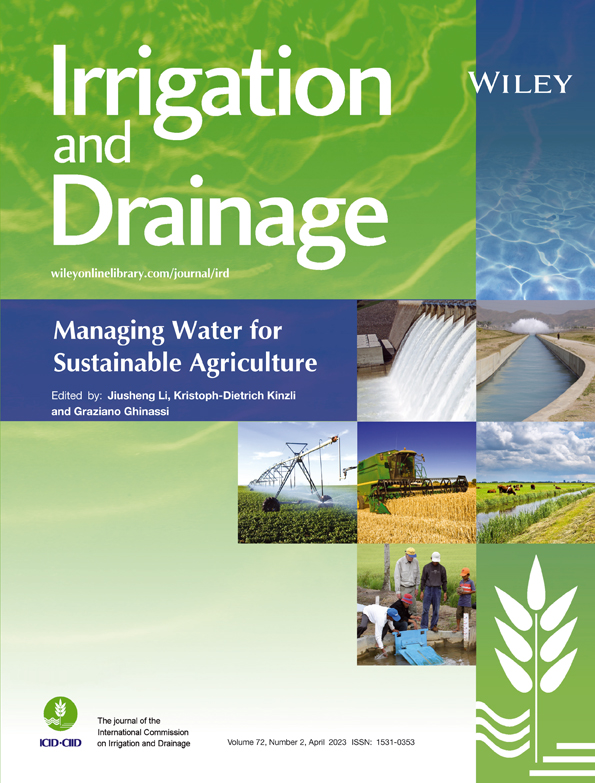Performance assessment of subsurface drainage systems in the Harran Plain of the South-East Anatolian region of Turkey
Article title in French: Evaluation des performances des systemes de drainage souterrain dans la plaine de Harran, dans la region du Sud-Est de L'Anatolie en turquie.
Abstract
enThe purpose of performance assessment of subsurface drainage systems is to achieve efficient and effective system performance by providing relevant feedback to the management of the drainage system at all levels. Therefore, it assists management in determining whether performance is satisfactory and, if not, what corrective actions need to be taken and where to rectify the situation. In this study, approximately 30% of the drainage systems built in the Harran Plain were monitored during one irrigation season in 2017. The fluctuation of the water table was measured daily at a total of 33 subcentres. In addition, electrical conductivity (EC) and pH values were measured by taking water samples from six collectors once a week. Drain flow measurements were carried out at three collector outlets. According to the SEW30 (sum of excess water at depths less than 30 cm) indicator, 82% of the monitored areas had good, medium-good drainage and moderate drainage. The seasonal average water table depth of the monitored area was found to be approximately 120 cm. The data show the existence of a drainage system that creates an aerated soil layer suitable for all shallow- and deep-rooted, water-resistant, and sensitive plants in all of the monitored areas. Generally, the salinity of drainage water is much higher than that of irrigation water. This value was up to 25 times higher in some collector outlets. This finding has raised suspicions that salty groundwater is being pumped into the drainage system.
Résumé
frLe but de l'évaluation des performances des systèmes de drainage de subsurface est d'obtenir des performances de système efficaces en fournissant une rétroaction pertinente à la gestion du système de drainage à tous les niveaux. Par conséquent, il doit aider la direction à déterminer si les performances sont satisfaisantes et, dans la négative, quelles mesures correctives doivent être prises et où rectifier la situation. Dans cette étude, environ 30% des systèmes de drainage construits dans la plaine du Harran ont été surveillés au cours d'une saison d'irrigation en 2017. La fluctuation de la nappe phréatique a été mesurée quotidiennement sur un total de 33 sous-centres. En outre, les valeurs d'EC et de pH ont été mesurées en prélevant des échantillons d'eau dans 6 collecteurs une fois par semaine. Des mesures d'écoulement ont été effectuées dans trois sorties de collecteur. Selon l'indicateur SEW30 (somme de l'excès d'eau), 82% des zones contrôlées avaient un bon drainage, un drainage moyen et un drainage modéré, tandis que les rapports totaux des zones pauvres, modérément pauvres et mal drainées étaient de 18%. La profondeur moyenne saisonnière de la nappe phréatique de la zone surveillée est d'environ 120 cm. Les données montrent l'existence d'un système de drainage qui crée une couche de sol aérée adaptée à toutes les plantes peu profondes et profondes, résistantes à l'eau et sensibles dans toutes les zones surveillées. En général, la salinité de l'eau de drainage est beaucoup plus élevée que celle de l'eau d'irrigation. Cette valeur était jusqu'à 25 fois supérieure dans certains points de collecte. Cette découverte a soulevé des soupçons que les eaux souterraines salées sont pompées dans le système de drainage.
Open Research
DATA AVAILABILITY STATEMENT
The data that support the findings of this study are available from the corresponding author upon reasonable request.




